The Most Charming Small Towns in the Balkans: Hidden Treasures

The Most Charming Small Towns in the Balkans: Hidden Treasures
Beyond the increasingly popular cities of Dubrovnik, Split, and Ljubljana, the Balkan Peninsula harbors countless enchanting small towns where centuries of complex history have created uniquely atmospheric destinations. From Ottoman-influenced settlements with distinctive minarets to Venetian-styled coastal villages and medieval fortresses perched on dramatic hillsides, these hidden gems offer travelers authentic experiences of the region's extraordinary cultural diversity. This guide unveils the Balkans' most charming small towns where visitors can experience the warm hospitality, architectural wonders, and rich cultural heritage that define this fascinating corner of Europe—without the crowds that increasingly dominate the region's more famous destinations.
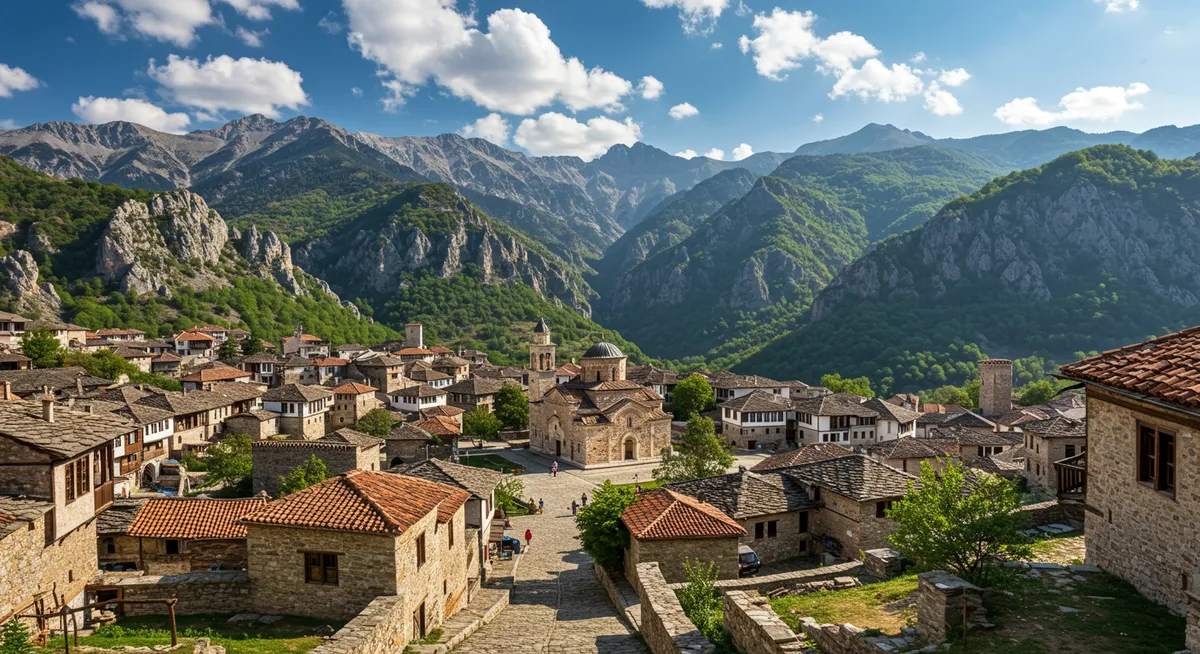
1. Berat, Albania: City of a Thousand Windows
Sprawling up a steep hillside above the Osum River, Berat presents one of the Balkans' most dramatic and well-preserved Ottoman townscapes. Known as the "City of a Thousand Windows" for its distinctive tiered houses with their large, closely placed windows that seem to climb one above the other toward the imposing castle, this UNESCO World Heritage site offers an authentic glimpse into Albania's rich cultural history. Despite growing recognition, Berat remains refreshingly genuine, with locals continuing their traditional way of life amid the historic surroundings.
What Makes It Special
- Ottoman Architecture: Remarkably intact historic districts of Mangalem and Gorica with their characteristic white Ottoman houses
- Berat Castle: Massive 13th-century fortress containing still-inhabited neighborhoods, churches, and mosques
- Byzantine Churches: Collections of exceptional Byzantine churches with remarkable frescoes and icons
- Living Heritage: Traditional crafts including woodcarving and textiles continuing in family workshops
Local Experiences
Wander the narrow, cobblestone streets of the Mangalem quarter, the historic Muslim neighborhood below the castle with its iconic "stacked" window houses climbing the hillside. Explore Berat Castle, one of the few "living castles" where an entire neighborhood continues within ancient fortress walls. Visit the Onufri Museum housed in the Cathedral of the Dormition of St. Mary, featuring masterful 16th-century iconography by Albania's most celebrated painter. Sample traditional Albanian cuisine at small family-run restaurants serving specialties like tave kosi (baked lamb with yogurt) and fërgesë (peppers with cottage cheese).
Getting There
Berat is located in central Albania, about 120 km (75 miles) south of Tirana. It's accessible by bus from Tirana (taking approximately 3 hours) or by car via the SH4 highway. The historic districts are pedestrianized, with parking available at designated areas outside the old quarters.
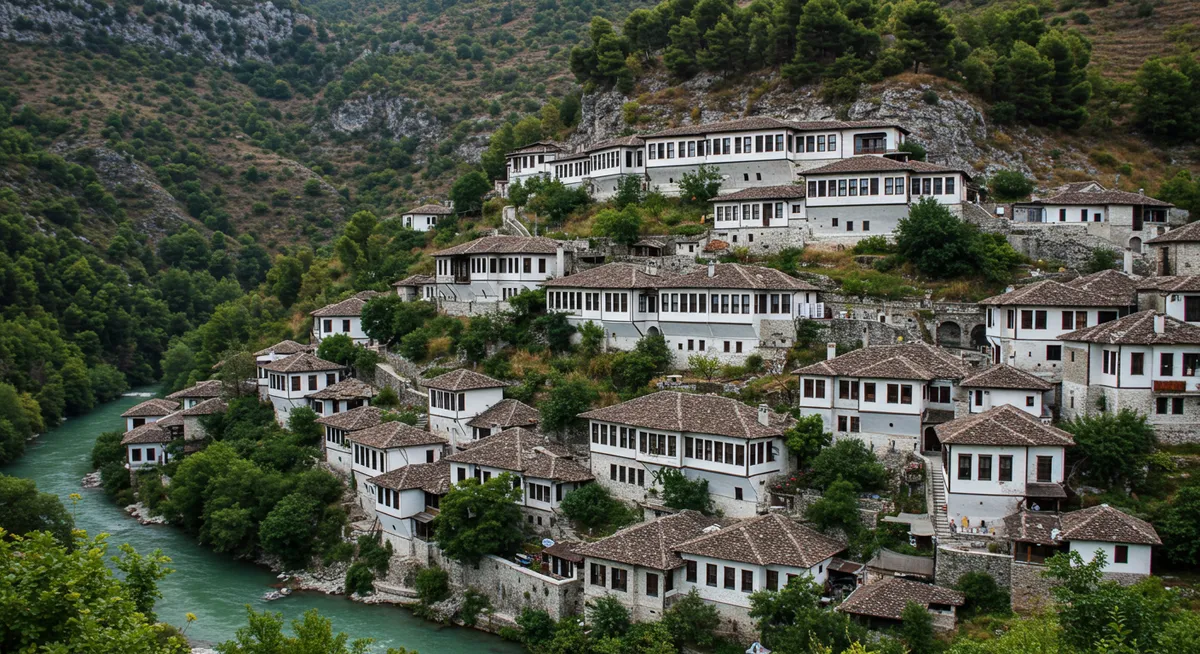
2. Mostar, Bosnia and Herzegovina: Bridge Between Cultures
Straddling the emerald waters of the Neretva River, Mostar captivates visitors with its iconic Ottoman bridge, narrow cobblestone streets, and poignant history. While the reconstructed Stari Most (Old Bridge) has made this small Herzegovinian city increasingly recognized, much of Mostar beyond the main pedestrian zone remains authentically Balkan, with quiet courtyards, local craftspeople, and a palpable sense of a place where East meets West. The city's recovery from the devastating 1990s conflict has transformed it into a powerful symbol of resilience and reconciliation.
What Makes It Special
- Stari Most: The graceful 16th-century Ottoman bridge, reconstructed after war damage, now a UNESCO World Heritage site
- Cultural Confluence: Visible blend of Ottoman, Mediterranean, and European architectural influences
- Historic Bazaar: Traditional Kujundžiluk (old bazaar) with copper craftspeople continuing centuries-old traditions
- Religious Diversity: Minarets and church bell towers punctuating the skyline in close proximity
Local Experiences
Watch local divers perform their traditional plunge from the Stari Most into the cold Neretva River 24 meters below—a tradition dating back generations. Explore the quiet side streets away from the main tourist thoroughfare, discovering hidden courtyards, traditional homes, and local cafés serving Bosnian coffee prepared in traditional copper džezvas. Visit the Turkish House (Kajtaz House), a perfectly preserved Ottoman nobleman's residence with original furnishings. Sample local specialties like sahan (mixed meat platter), japrak (stuffed vine leaves), and klepe (Bosnian ravioli) at family-run restaurants.
Getting There
Mostar is located in southern Bosnia and Herzegovina, about 130 km (80 miles) southwest of Sarajevo. It's accessible by train from Sarajevo (a spectacular mountain route considered one of Europe's most scenic rail journeys), by bus from major Balkan cities, or by car. The historic center is pedestrianized, with parking available around the periphery.
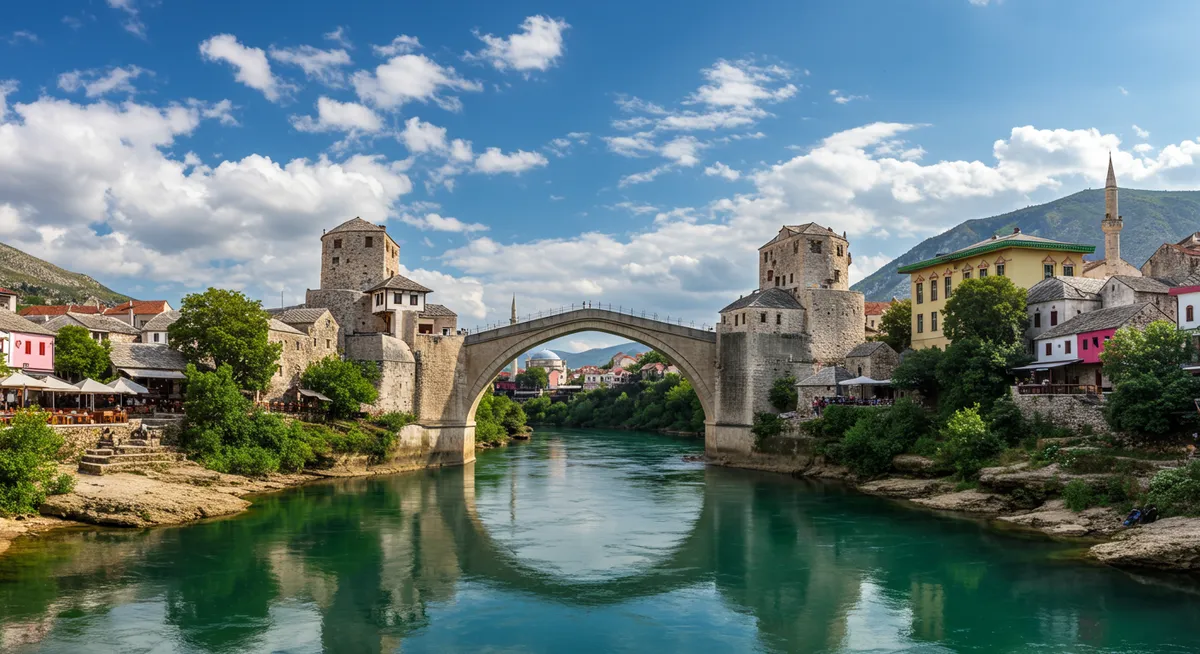
3. Ohrid, North Macedonia: Lakeside Gem
Perched on the shores of the ancient Lake Ohrid and climbing the hillside to a medieval fortress, Ohrid combines natural splendor with extraordinary cultural heritage. This UNESCO-listed town preserves over 365 churches (traditionally one for each day of the year), Byzantine architecture, and Roman ruins, all while maintaining the relaxed atmosphere of a lakeside retreat. Despite growing recognition, much of Ohrid's old town remains a maze of quiet, twisting lanes where locals continue traditional life patterns established over centuries.
What Makes It Special
- Ancient Lake: Situated on the shores of Europe's oldest and deepest lake, estimated to be 3 million years old
- Religious Heritage: Extraordinary concentration of historic churches with remarkable frescoes and icons
- Archaeological Treasures: Ancient theater, early Christian basilicas, and medieval structures
- Unique Craftsmanship: Traditional paper-making, woodcarving, and pearl crafting continuing for centuries
Local Experiences
Visit the Church of St. John at Kaneo, perched dramatically on a cliff above the lake, offering both spiritual significance and spectacular panoramic views. Explore the atmospheric streets of the old town, where Ottoman-era houses feature distinctive wooden balconies overhanging narrow lanes. Learn about traditional handmade paper production at a workshop continuing methods from the Ottoman period. Sample unique Lake Ohrid specialties, particularly the endemic Ohrid trout prepared according to recipes passed down through generations of local families.
Getting There
Ohrid is located in southwestern North Macedonia, about 170 km (105 miles) southwest of Skopje. It's accessible by bus from Skopje and other regional cities, or by car via the A2 expressway. Ohrid also has its own international airport with seasonal flights from European cities. The historic center is largely pedestrianized.
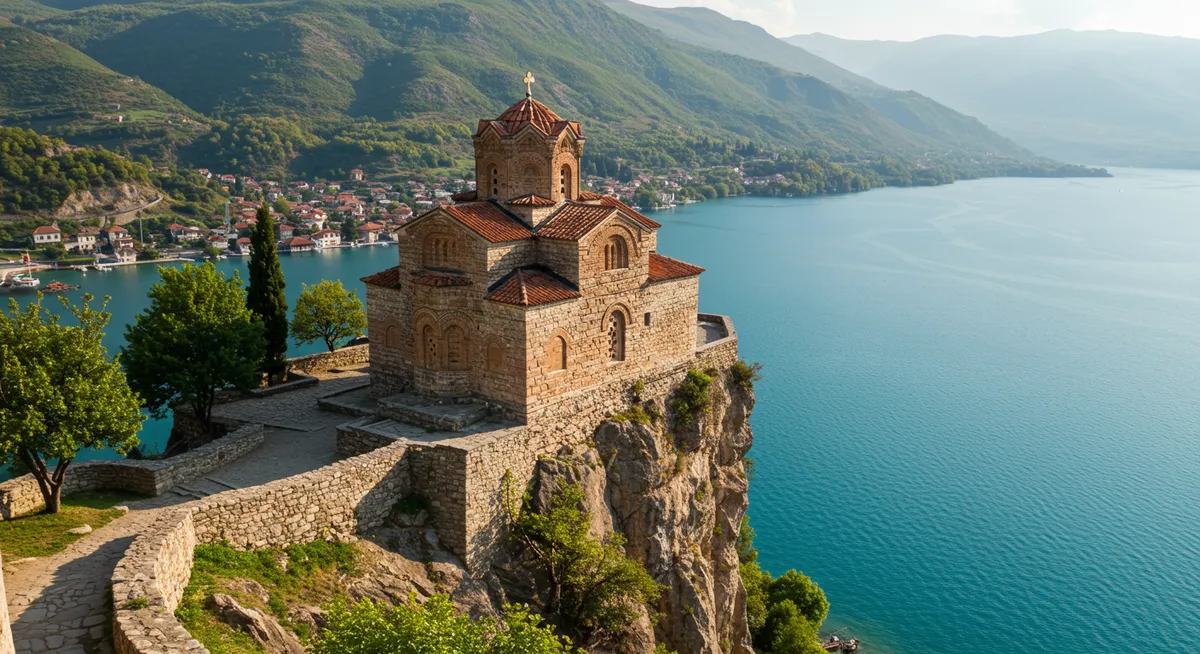
4. Prizren, Kosovo: Ottoman Treasure
Nestled in a valley surrounded by the Sharr Mountains, Prizren represents Kosovo's cultural jewel—a beautifully preserved Ottoman town where minarets, Orthodox church towers, and fortress walls create a striking skyline. As Kosovo's historical cultural capital, this small city offers visitors an authentic glimpse into the region's diverse heritage, with exceptional Ottoman architecture, cobblestone streets, and a vibrant atmosphere where modern Kosovar life unfolds within centuries-old surroundings.
What Makes It Special
- Ottoman Cityscape: One of the best-preserved Ottoman urban landscapes in the Balkans
- Sinan Pasha Mosque: Magnificent 17th-century mosque dominating the riverside
- Cultural Crossroads: Visible layers of Albanian, Serbian, Ottoman, and Byzantine heritage
- Dokufest: Hosts the internationally acclaimed documentary film festival each August
Local Experiences
Wander the charming cobblestone streets of the old town, crossing the stone bridges over the Bistrica River to explore both sides of the historic center. Climb to the fortress (Kalaja) perched above the town for spectacular panoramic views of the mountains, minarets, and terracotta rooftops below. Visit the League of Prizren complex, birthplace of the Albanian national movement, to understand the region's complex political history. Sample traditional Kosovar cuisine at family-run restaurants serving specialties like flija (layered pancake dish), sharr cheese, and pasulj (bean stew).
Getting There
Prizren is located in southern Kosovo, about 85 km (53 miles) southwest of Pristina. It's accessible by regular bus services from Pristina (taking approximately 2 hours) or by car. The historic center is largely pedestrianized, with parking available at designated areas around the periphery.

5. Kotor, Montenegro: Adriatic Fjord Town
Dramatically situated at the end of southern Europe's deepest fjord-like bay and backed by towering limestone mountains, Kotor combines natural splendor with exceptional Venetian heritage. While increasingly discovered by cruise ships, this fortified medieval town remains authentically Montenegrin once you step away from the main squares, with quiet residential neighborhoods, local konobas (taverns), and ancient staircases winding through the town. The imposing walls that climb the mountain behind create one of the Mediterranean's most spectacular urban scenes.
What Makes It Special
- Bay Setting: Located on Europe's southernmost fjord with dramatic mountains plunging into azure waters
- Venetian Architecture: Exceptional medieval old town reflecting centuries of Venetian influence
- Fortress Walls: Impressive defensive walls climbing 280 meters up the mountainside
- Maritime Heritage: Centuries of seafaring tradition celebrated in the town's culture and cuisine
Local Experiences
Climb the 1,350 steps along the ancient fortress walls to St. John's Fortress for increasingly spectacular views across the bay and old town's terracotta rooftops. Explore the maze-like streets of the old town after sunset when day-trippers have departed, discovering hidden squares and centuries-old churches illuminated against the night sky. Visit the Maritime Museum housed in an 18th-century Baroque palace to understand the region's seafaring heritage. Sample fresh Adriatic seafood and Montenegrin specialties like njeguški pršut (prosciutto) and crni rižot (black risotto colored with cuttlefish ink) at traditional konobas away from the main squares.
Getting There
Kotor is located in southwestern Montenegro, about 90 km (56 miles) from Dubrovnik, Croatia, and 90 km from Podgorica, Montenegro. It's accessible by bus from coastal cities and neighboring countries, or by car via the scenic coastal road or mountain route from Cetinje. The old town is pedestrianized, with parking available outside the walls.

6. Veliko Tarnovo, Bulgaria: Medieval Capital
Dramatically situated on three hills above the winding Yantra River, Veliko Tarnovo captivates visitors with its hillside houses seemingly stacked one above another and its imposing Tsarevets Fortress that once housed Bulgarian medieval kings. As the historical capital of the Second Bulgarian Empire, this university town combines exceptional historical significance with a vibrant contemporary atmosphere, where traditional crafts flourish alongside bohemian cafés and art studios.
What Makes It Special
- Dramatic Topography: Built across three hills with houses cascading down steep slopes above the river
- Tsarevets Fortress: Massive medieval stronghold that served as the primary Bulgarian fortress from 1185-1393
- Revival Architecture: Exceptional collection of Bulgarian National Revival style buildings
- Craft Traditions: Living traditions of icon painting, woodcarving, and textiles in the Samovodska Charshia district
Local Experiences
Explore the imposing Tsarevets Fortress, once home to Bulgarian tsars, and witness the dramatic Sound and Light Show that illuminates the fortress walls after dark (scheduled several times weekly). Wander the atmospheric Samovodska Charshia (Artisans' Street), where traditional craft workshops continue techniques passed down through generations. Visit the historic merchant houses of Gurko Street, built dramatically into the steep riverbank with wooden balconies offering stunning views. Sample traditional Bulgarian dishes like kavarma (slow-cooked meat stew), banitsa (cheese-filled pastry), and rakia (fruit brandy) at family-run restaurants in the old town.
Getting There
Veliko Tarnovo is located in north-central Bulgaria, about 220 km (137 miles) northeast of Sofia. It's accessible by regular train and bus services from Sofia and other Bulgarian cities, or by car via the Hemus Highway. The historic center involves navigating steep streets and stairways, so comfortable walking shoes are essential.
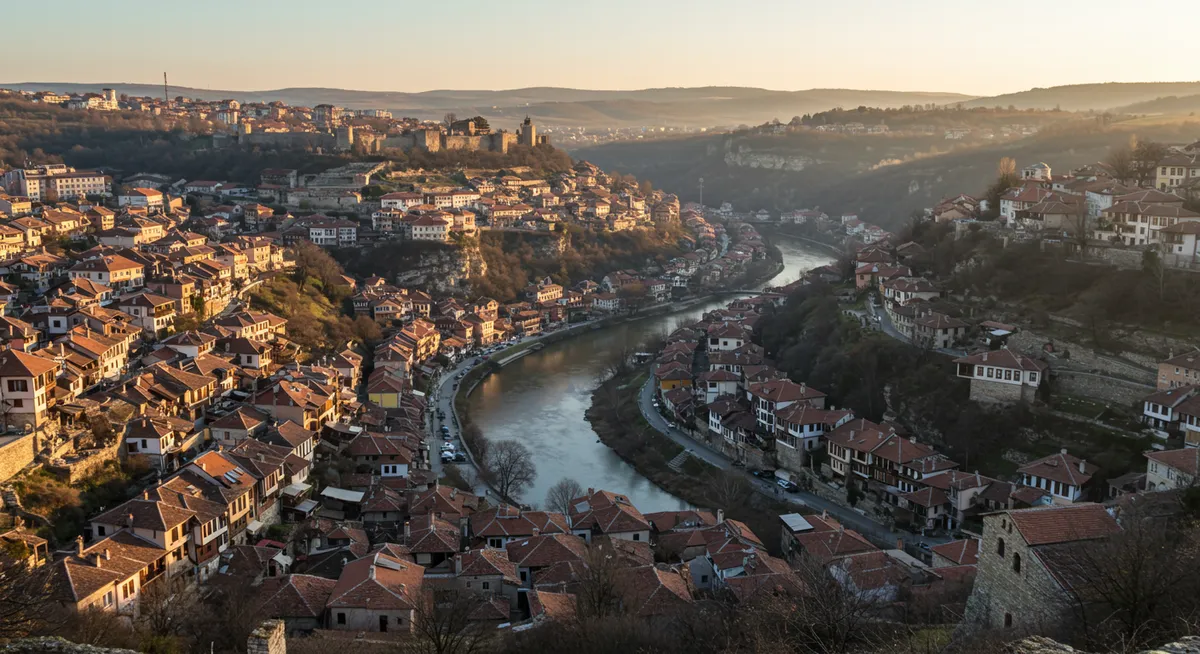
7. Gjirokastra, Albania: Stone City
Rising up a steep hillside beneath an imposing fortress, Gjirokastra presents one of the Balkans' most distinctive urban landscapes—a city built almost entirely of local stone. This UNESCO World Heritage site, with its characteristic slate-roofed houses resembling small fortresses, offers visitors an authentic glimpse into Albania's past, from Ottoman influences to the communist era. Despite growing recognition, Gjirokastra remains genuinely Albanian, with everyday life continuing amid exceptional historic surroundings.
What Makes It Special
- Stone Architecture: Distinctive Ottoman-era stone houses with fortress-like features and slate roofs
- Gjirokastra Castle: Massive hilltop fortress housing a military museum with artifacts spanning centuries
- Historic "Kule" Houses: Unique tower houses built by wealthy Ottoman-era merchants
- Literary Heritage: Birthplace of novelist Ismail Kadare, whose works often feature the town
Local Experiences
Explore the massive Gjirokastra Castle, one of the largest in the Balkans, offering both historical insights and panoramic views across the Drino Valley. Visit the remarkable Skenduli House or Zekate House, some of the best-preserved Ottoman-era tower houses featuring distinctive architecture and original furnishings. Wander the cobblestone streets of the old bazaar, where small shops sell traditional crafts including woolen textiles and carved wood. Sample authentic southern Albanian cuisine, particularly dishes like qifqi (rice balls with herbs) and traditional byrek (savory pastry) at small family-run taverns.
Getting There
Gjirokastra is located in southern Albania, about 230 km (143 miles) south of Tirana. It's accessible by bus from Tirana and other Albanian cities, or by car via the SH4 highway. The historic center involves steep, cobblestone streets, making comfortable footwear essential and limiting accessibility for those with mobility challenges.
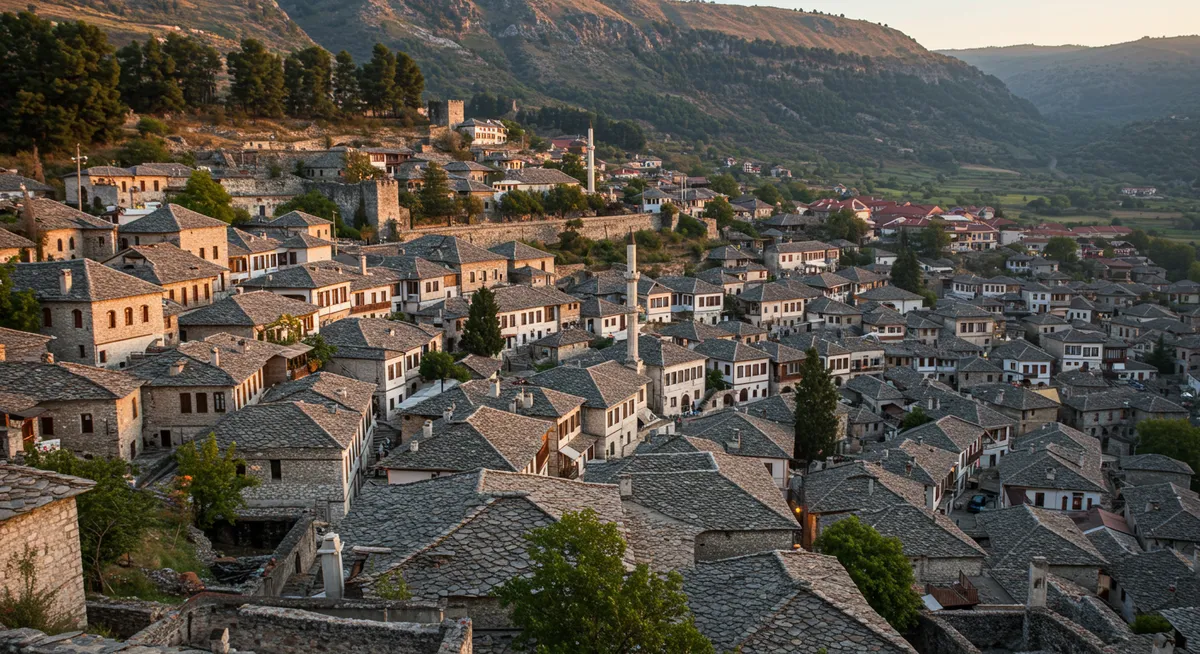
8. Višegrad, Bosnia and Herzegovina: Bridge on the Drina
Straddling the emerald Drina River in eastern Bosnia, Višegrad centers around its magnificent 16th-century bridge, immortalized in Ivo Andrić's Nobel Prize-winning novel "The Bridge on the Drina." This small town offers visitors a powerful combination of extraordinary Ottoman architecture, literary significance, and authentic Bosnian culture in a setting relatively untouched by mass tourism. While the bridge itself attracts literary pilgrims and history enthusiasts, the surrounding town provides an unpretentious glimpse into everyday life in this often-overlooked corner of the Balkans.
What Makes It Special
- Mehmed Paša Sokolović Bridge: UNESCO-listed 16th-century Ottoman bridge with 11 graceful arches spanning the Drina
- Literary Heritage: Setting of Ivo Andrić's masterpiece novel that chronicles four centuries of local history
- Andrićgrad: Unique stone town built by filmmaker Emir Kusturica as a tribute to Ivo Andrić
- Natural Setting: Surrounded by the dramatic landscapes of eastern Bosnia's mountains and river valleys
Local Experiences
Walk the length of the magnificent Mehmed Paša Sokolović Bridge, pausing at its central widening (sofa) where locals have gathered for centuries to discuss community matters. Explore Andrićgrad (Stonetown), the unusual cultural complex built by filmmaker Emir Kusturica featuring architecture spanning Byzantine to Ottoman to Renaissance styles. Visit the Ivo Andrić Museum to learn about the Nobel laureate's life and literary contributions. Sample traditional Bosnian river fish specialties and Ottoman-influenced dishes like ćevapi (grilled minced meat) and dolma (stuffed vegetables) at riverside restaurants with views of the bridge.
Getting There
Višegrad is located in eastern Bosnia and Herzegovina, about 120 km (75 miles) east of Sarajevo. It's accessible by bus from Sarajevo and other regional centers, or by car. The town is small enough to explore entirely on foot, with the bridge as the central focal point.
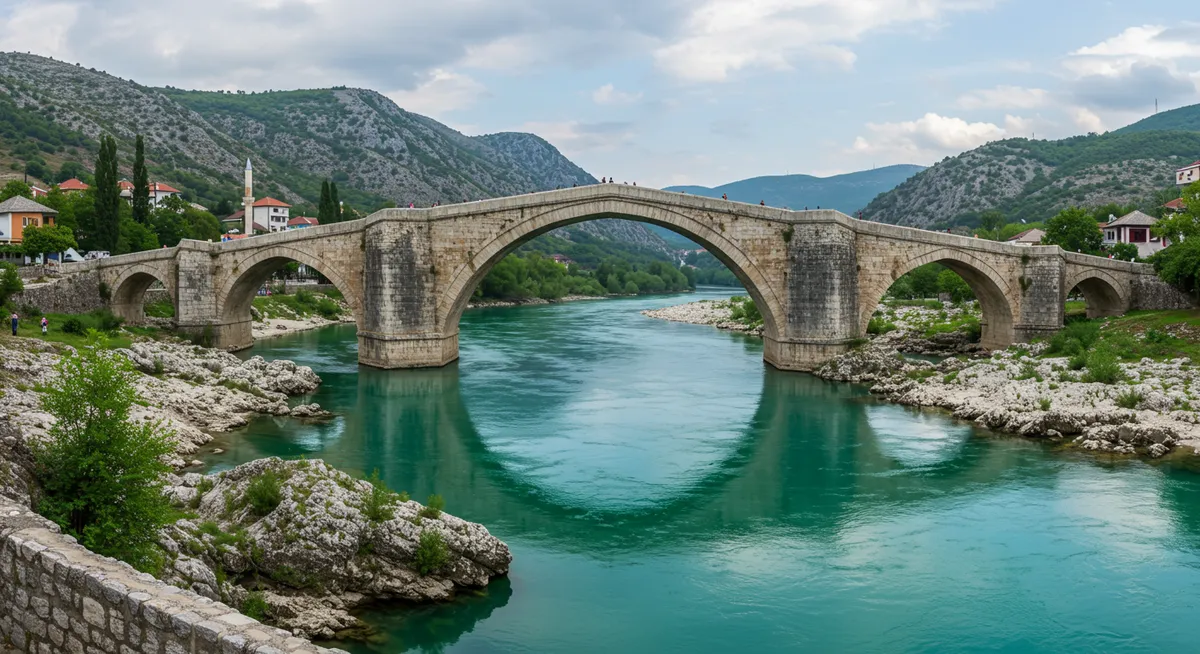
Travel Tips for Visiting Balkan Small Towns
To make the most of your experience exploring these enchanting destinations, consider these practical recommendations:
Best Time to Visit
Late spring (May-June) and early autumn (September-October) offer ideal conditions—pleasant temperatures, minimal rainfall, and fewer crowds. July and August bring intense heat, particularly in southern destinations like Berat and Gjirokastra, though coastal towns like Kotor benefit from sea breezes. Winter visits (November-March) provide an authentically local experience, though some attractions may have limited hours and mountain roads can be challenging in snowy conditions. Note that Orthodox Easter and various national holidays can significantly affect opening times and accommodation availability.
Transportation
While intercity buses connect most destinations, renting a car offers the most flexibility for exploring these often remote towns. Border crossings between Balkan countries are generally straightforward but can involve delays; carry your passport at all times. Many historic centers are pedestrianized, requiring parking outside town walls or at designated areas. Consider combining a self-drive approach with local guides in individual towns to gain deeper historical and cultural insights.
Accommodations
Book accommodations in advance during summer months, particularly in more recognized destinations like Kotor and Mostar. Many towns offer authentic stays in historically significant buildings, ranging from Ottoman-era houses converted to small hotels to rooms in family homes. Look for accommodations inside historic districts for the most atmospheric experience, though be prepared for stairs, uneven surfaces, and limited vehicle access. Family-run guesthouses often provide the warmest welcome and most authentic cultural exchanges.
Cultural Awareness
The Balkans' complex history has created sensitive cultural and political dynamics; avoid making political statements or comparisons between countries. When visiting religious sites, respectful dress is essential—shoulders and knees should be covered, and women may need to cover their heads in some Orthodox churches and mosques. Learning a few basic greetings in local languages is greatly appreciated. Be aware that smoking is still common indoors in many Balkan countries, and vegetarian options may be limited in more traditional establishments.
Pro Tip: Many Balkan towns host vibrant cultural festivals throughout the summer, from traditional music gatherings to film festivals and religious celebrations. Research festival dates in advance—these events offer exceptional cultural insights, though accommodation will be scarcer and more expensive during these periods.
Planning Your Balkan Small Town Itinerary
These eight towns represent just a sampling of the Balkans' hidden treasures. Consider exploring them as part of these regional itineraries:
- Albanian Heritage Tour: Combine Berat and Gjirokastra with stops at other cultural sites to experience Albania's remarkable Ottoman and Illyrian history
- Former Yugoslavia Circuit: Link Mostar, Višegrad, Prizren, and Ohrid to understand the diverse cultural traditions that made up the former federation
- Adriatic Coastal Journey: Connect Kotor with other coastal towns in Montenegro and Croatia for a less-touristed alternative to popular Dalmatian destinations
- Ottoman Heritage Exploration: Visit towns with significant Ottoman influences including Prizren, Mostar, and Berat to follow the historical imprint of the Ottoman Empire across the Balkans
For those looking to expand their hidden gem exploration beyond the Balkans, our guides to medieval villages in Italy and secret villages of Portugal offer perfect complements to your European adventures.
Related Hidden Gem Towns Around Europe
If you enjoy discovering the Balkans' charming towns, you might also appreciate these similar destinations in nearby regions:

7 Underrated Medieval Villages in Italy You'll Love
Discover Italy's best-kept secrets - charming medieval villages off the tourist trail that offer authentic Italian experiences.

Off-the-Beaten-Path Villages in Southern France
Discover enchanting hidden villages in Southern France that offer authentic Provençal experiences away from tourist crowds.
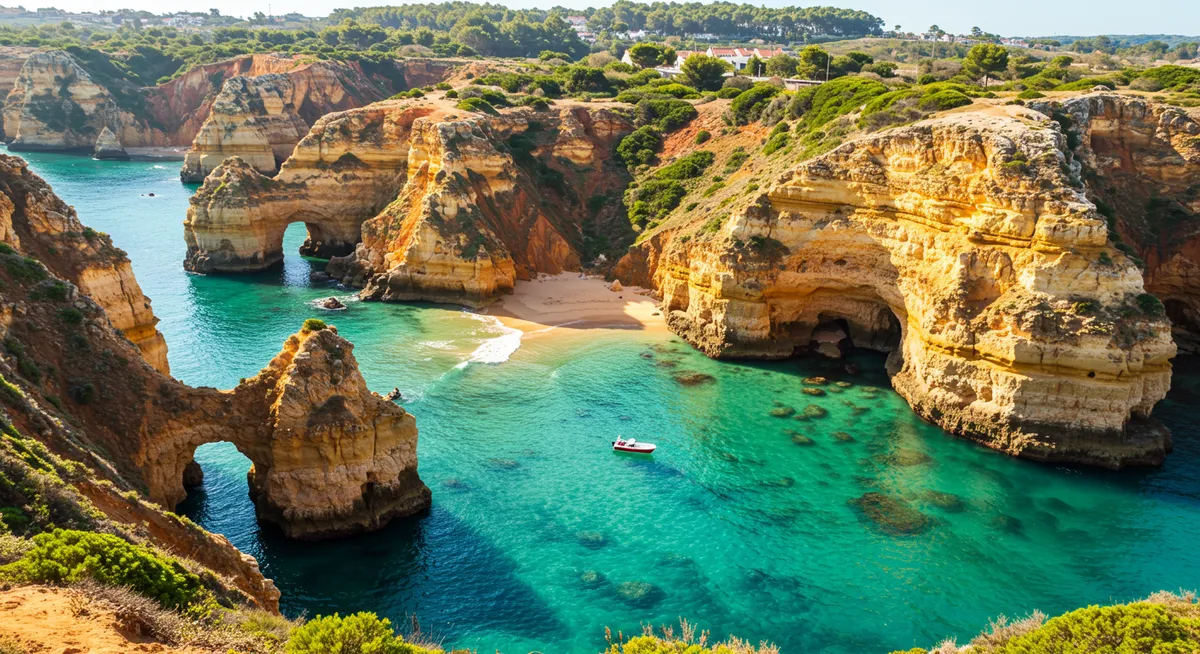
Secret Villages of Portugal: Beyond Lisbon and Porto
Discover Portugal's most enchanting hidden villages offering authentic experiences away from tourist crowds.
Explore More Hidden Gem Towns
Discover more enchanting under-the-radar destinations across Europe and beyond.